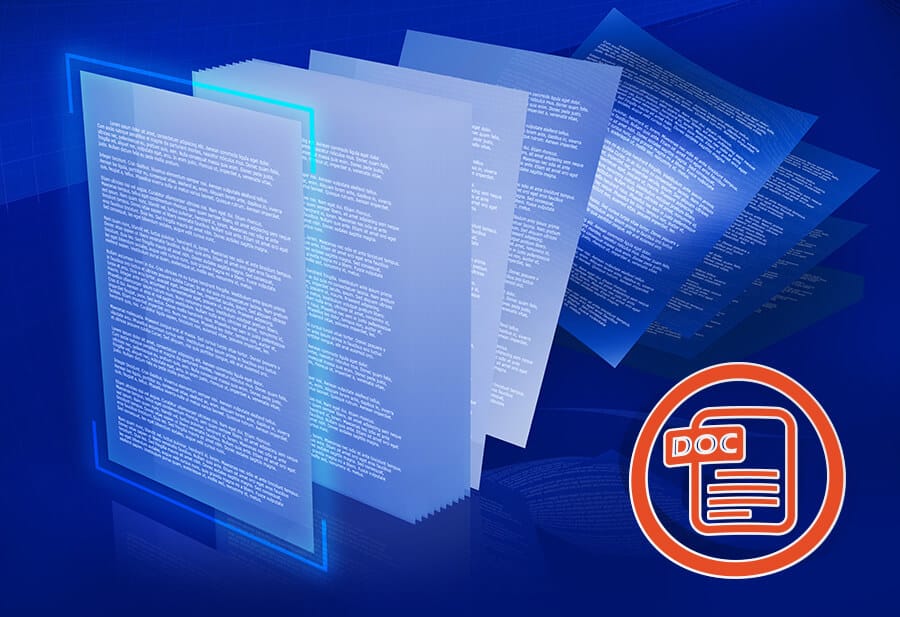When it comes to using Microsoft Word, we tend to get by with the minimum knowledge all the ins and outs of the app although some of the useful shortcuts are simple. In this article we will talk about the buttons on the keyboard you have been avoiding and learn the tricks to simplify our everyday use of the MS Word.
Microsoft Word is a word processor that was created in 1983 and then was adopted for early IMB computers, Apple Macintosh and, of course, Microsoft Windows. It is one of the most popular word processors along with OpenOffice Suite, Microsoft Notepad, and Corel Word Perfect. Despite it being present in our lives throughout our studies and our work life, we tend to only use a handful of shortcuts and smart approaches it provides for users.
Before we dive into the lifehacks, let’s go over some of the buttons you most likely never pressed and some of the vocabulary that might be confusing. To start of, locate the arrows on the right-hand side of the keyboard and make notice of two additional keys – Home PgUp and PgDn End. The section at the top of the screen with all the tools is called the command ribbon and can be either collapsed on pinned for easier access.
Moving Around the Document
When it comes to navigating your way around the Microsoft Word document, there are several ways to go about it, depending on your preference and tech-savviness, the most obvious way to move up and down the page is to use the Scroll bar to the right of the page. You probably didn’t expect anything new there but… Not only are you able to work it by left-clicking the mouse, right-clicking anywhere on the bar will open up the window such command as Scroll Here, go to the Top/Bottom, go one screen up or down (Page Up and Page Down) to save you scrolling by hand. Additionally, you can also use the touchpad with two fingers to scroll up and down or apply the following shortcuts:
Fn+Home and Fn+End will take you either to the beginning or the end of the current line. Ctrl+Home and Ctrl+End will send you to the very beginning or the end of the document. Simply pressing Home PgUp and PgDn End will move take you to the next or previous screen (try it, it makes sense!).
Now let’s put the arrows to use. Ctrl+Up and Ctrl+Down takes you to the beginning of the next or previous paragraph. Ctrl+Left and Ctrl+Right moves the insertion point one word to the left or to the right.
Working With Tables
These shortcuts are a pleasant surprise as they truly make the process of filling out the tables seamless. To go from one cell to another simply use Tab button and add the arrows to up and down the columns. Shift+Tab will specifically take you to the cell on your left. Alt+PgUp and Alt+PgDn will send you to the top/bottom of the current column in a table.
To make your table look “put-together, distribute the width and length of the rows and columns with the command ribbon on the top. First, select your table, go the Layout, and select Distribute Rows/Columns. This will even out the cells based on the largest one.
Selecting the Text Like a Pro
A mouse or a touchpad will work too, however, the following neat shortcuts will make you feel like a Word guru. Shift+Right and Shift+Left will select a letter to the right and to the left from the insertion point. Shift+Up and Shift+Down select a previous or a following line. Long-pressing Shift+PgUp and Shift+PgDn will select the section of the text all the way to the beginning or to the end of the document.
The next shortcut is fun to use, although it may not be amongst the most frequently used one. If you need to select a rectangle of a text, regardless of where the words begin and end, press Alt and use the mouse or the touchpad to select the area on the screen. It will copy whatever is in that rectangle as it is.
Switch Between Different Modes
Depending on what you’re doing with your document, MS Word has several view modes to help you navigate through the text. The modes are the Read mode, Print layout, Web layout, Outline, and Draft. You can select one in the command ribbon under the View section.
Read Mode will present the information in a two-page layout as if you were reading a book. To exit the mode, press Esc. The default view is the Print Layout, it has gaps in between the pages as well as allows to see the overall view of the document. Web Layout enables you to see the text if you were to save the document as a web page. You can continue editing the document in this mode, and in order to return to Print Layout, select the icon in the right bottom corner of the screen. Additionally, Outline structures the text as outline headings and subheading while Draft mode displaces the document without any pages.
How to Draw in MS Word
To add shapes, lines, and icons into the body of the text, use the Command ribbon, select Insert, and play around with Shapes, Icons, and Charts. Once you pick one of the options, work with your design as if it is an image. You can fill shapes with color, change the thickness of their outline, add effects, and wrap text around it
By choosing straight or curved lines, you can use your mouse to create shapes of your choosing, however, this may be tricky due restrains working with a mouse. Once you shape is ready, you can right-click on it to add text, edit points, or wrap text around it.
Access Hidden Gems of Word
The Review section of the Command ribbon in Word is something not many people use on a daily basis. However, once you stumble upon it, you get the excitement similar to the feeling you get after discovering a beautiful park or finding a cozy local café/pub that wants you to slow down and be present in the moment.
In this section, Word has combined tools you would normally Google. The Editor tool allows you to search for spelling and grammar mistakes as well as look for punctuation conventions like the Oxford coma. Reading out loud will read a section of the text in a robotic voice similar to the one of Stephen Hawking. Simply place a cursor where you’d like to start and press Read Aloud.
Translate will give you two options of either translating a part of text or the whole document into the language of your choosing. To translate a section, simply press on the Translate in the ribbon, and select the required section. The translation as well as the original text will appear on the right of the screen. Translating the whole document will create a translated copy of this document in just a few seconds.
This section also allows you to restrict editing of the document and choose the read only mode, allow to comment or fill in forms only.
Get Help on How to Use MS Word
The very last Help section in the Command ribbon has five commands which allow you to either contact support and provide feedback or access information straight away. The Show Training and What’s New are the commands that open up a menu on the right side of the screen and take you to the search bar where you can either type in your query or get the latest updates on new Word features. The Show Training provides short videos on how to get started with the Word, format texts, work with page layouts, insert tables, coathor documents and more.
With the latest updates, such as the ability to insert royalty-free photos from straight away, Word has become a powerful tool that combines the searching power of Google and the intuitive user-friendly experience.
Photos: Shutterstock / Edited by: Martina Advaney
Did you find the article on Microsoft Word useful? More articles on Digital Skills:
Support us!
All your donations will be used to pay the magazine’s journalists and to support the ongoing costs of maintaining the site.
Share this post
Interested in co-operating with us?
We are open to co-operation from writers and businesses alike. You can reach us on our email at [email protected]/[email protected] and we will get back to you as quick as we can.










